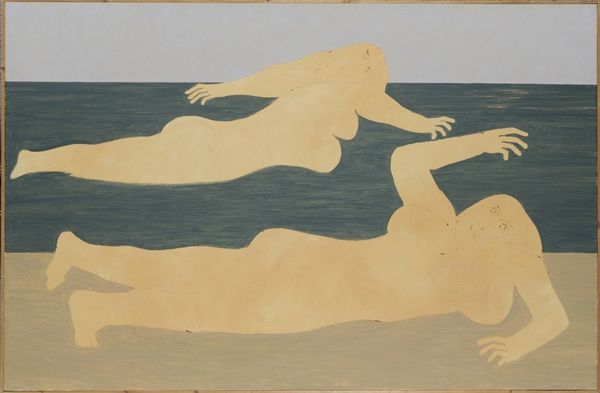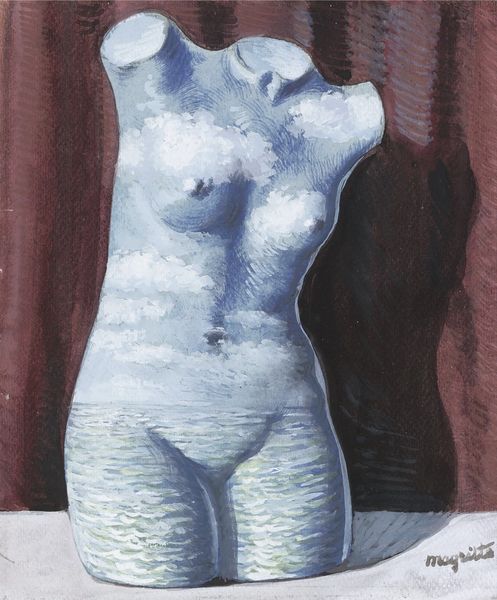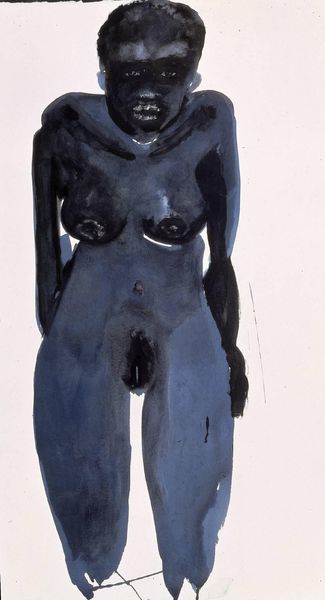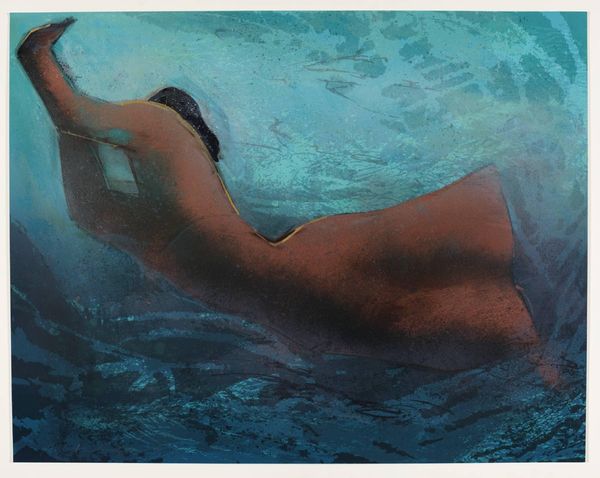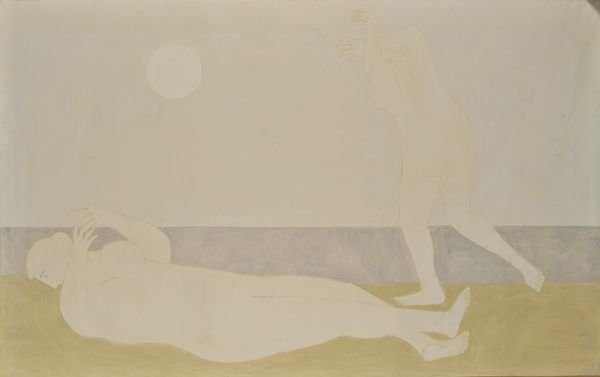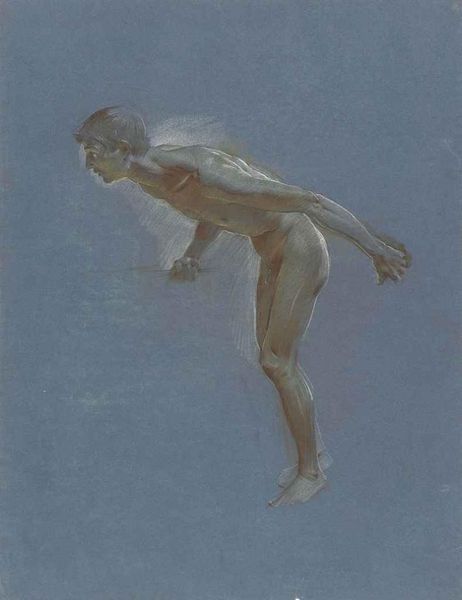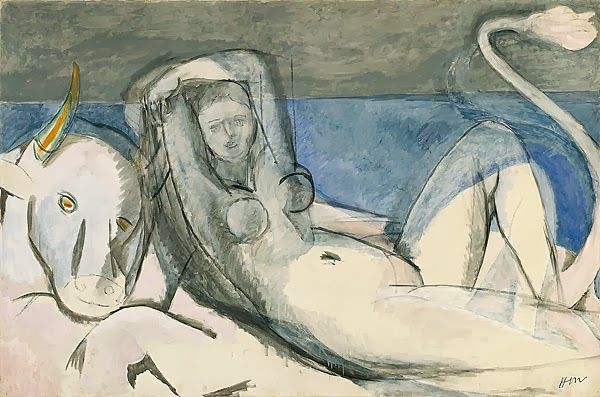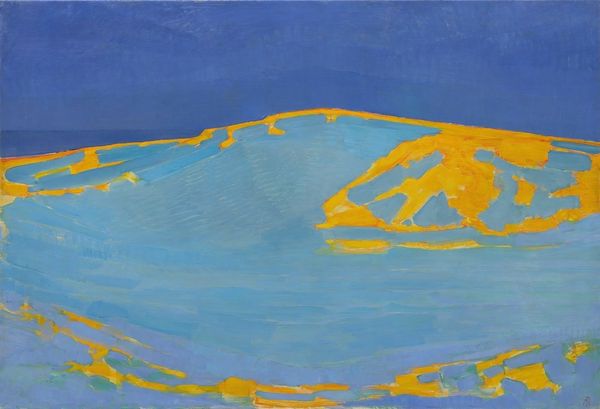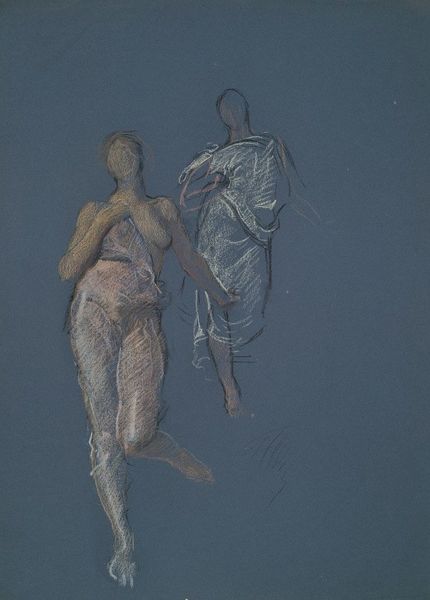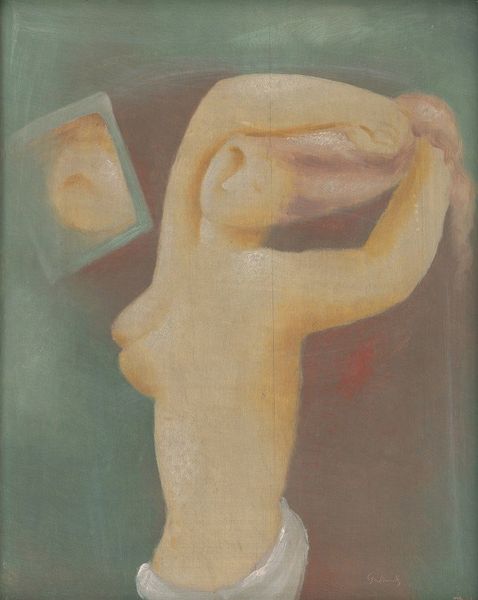
drawing
#
portrait
#
drawing
#
figuration
#
pre-raphaelites
#
nude
Copyright: Public Domain: Artvee
Editor: We are looking at a study by Edward Burne-Jones for his painting ‘The Death of Medusa I.’ It’s a chalk drawing of a nude figure, all in cool blue tones. The starkness of the figure against the blue background makes me think about isolation, like she's suspended in another world. What do you see in this piece? Curator: The effectiveness of Burne-Jones’s study hinges upon the formal contrast between line and ground, wouldn't you agree? Consider how the whiteness of the chalk, delicately applied, defines the contours of the figure, while the azure expanse behind establishes a serene yet detached field. Editor: Definitely, it's like the white figure is carved from the blue space itself. Curator: Precisely. Note the deliberate absence of a fully rendered face. The sketch privileges form over individual character. We find an emphasis on pure line and massing that evokes classical ideals. Semiotically, the work represents the body more as signifier than signified. Editor: So the point is less about Medusa specifically and more about the ideal human form? Curator: It would seem the artist wishes us to engage more deeply with pure form and abstract line. Further inquiry of composition brings one to that end. One must inquire - does not the absence prompt our engagement in decoding what she may signify? Editor: That makes sense. I hadn't considered how much the *lack* of detail could add to the piece. Curator: In prioritising pure aesthetics, Burne-Jones elevates his sketch from a mere preliminary study into a meditation of formal elements, thus creating new meanings that allow us to re-interpret the figure with our own codes. Editor: So by stripping away so much, the study actually communicates more. It focuses attention and creates layers of possibility. Curator: Precisely, such attention reveals what we could miss, in favor of appreciating the aesthetic value in pure form.
Comments
No comments
Be the first to comment and join the conversation on the ultimate creative platform.
